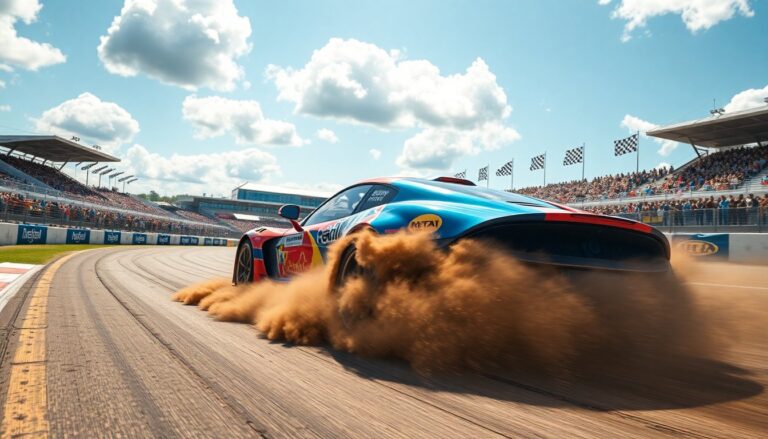Argomenti trattati
Motor sport transcends mere competition; it embodies a lifestyle that engages millions globally. The exhilarating sound of roaring engines and the distinctive scent of burnt rubber create an electrifying atmosphere that attracts both fans and participants. Whether it involves Formula 1, MotoGP, or rally racing, each discipline presents distinct challenges that push the boundaries of human skill and mechanical performance. This article delves into the multifaceted nature of motor sport, examining its rich history, the advanced technology that drives it, and the essential qualities required to excel as a racer.
The rich history of motor sport
The origins of motor sport date back to the late 19th century, coinciding with the invention of the automobile. The first documented automobile race took place in 1895, featuring a group of cars racing from Paris to Bordeaux in France. This landmark event signified the dawn of a new era, where speed and competition began to shape the foundations of modern motor sport. Over the years, motor sport has evolved significantly, giving rise to various racing series and categories, each cultivating its own distinct culture and dedicated fanbase.
Key milestones in motor sport
Motor sport has experienced numerous milestones throughout its history, significantly influencing its development. The formation of the Fédération Internationale de l’Automobile (FIA) in 1904 established essential standardized rules and regulations, vital for ensuring fair competition. The launch of Formula 1 in 1950 marked a turning point for the sport, drawing elite talent and substantial investment in automotive technology. Iconic events such as the Le Mans 24 Hours and the Monaco Grand Prix have achieved legendary status, representing the ultimate tests of endurance and speed.
The technology behind the speed
Motor sport is driven by a constant quest for innovation and technology. Modern racing cars exemplify engineering excellence, utilizing advanced materials, aerodynamics, and cutting-edge electronics. For example, the incorporation of carbon fiber has dramatically decreased vehicle weight while simultaneously enhancing strength. Furthermore, the adoption of hybrid technology combines traditional internal combustion engines with electric power, resulting in improved efficiency and performance.
Aerodynamics and performance
Aerodynamics is pivotal in determining a car’s performance, influencing both speed and handling characteristics. Racing teams allocate significant resources to wind tunnel testing, aiming to refine their designs for reduced drag and enhanced downforce. The ground effect is a notable illustration of this interplay, where a car’s underbody generates a vacuum, improving grip on the track. This technique exemplifies the integration of science and engineering within motorsport. As teams strive for competitive advantages, they continuously explore innovative solutions to achieve superior performance.
The path to becoming a racer
Success in motorsport requires more than just a passion for speed; it demands rigorous training, discipline, and unwavering dedication. Aspiring racers typically begin their journey in karting, where they grasp the fundamentals of vehicle dynamics and learn essential racing lines. Progressing through various levels, such as Formula Ford and GT racing, provides invaluable experience. This pathway is crucial for those aiming to reach the pinnacle of their sport, including the prestigious Formula 1.
The mental game
In addition to physical skills, the mental aspect of racing plays a crucial role. Drivers must demonstrate exceptional concentration, quick decision-making abilities, and the capacity to remain calm under pressure. Techniques such as visualization and mindfulness are increasingly adopted by racers to enhance performance. Mastering the intricacies of race strategy, tire management, and fuel conservation can often determine the difference between victory and defeat.
The implications
Motor sport is an exhilarating field that combines speed, technology, and significant human skill. With its rich history and bright future, it continues to evolve, drawing in new fans and participants. Those who aspire to reach racing glory encounter numerous challenges, yet the rewards remain as thrilling as the races themselves.

